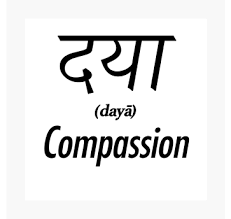DAYA KAUR, RAM (d. 1823), widow of Gurbakhsh Singh of the Nishanavali principality of the Sikhs who ruled over Ambala, assumed control of the misi and the family estate upon her husband`s death in 1786. She ruled over the territory remarkably well for nearly 37 years. Sir Lepel Griffin in his The Rajas of the Punjab says, "She was an excellent ruler and her estate was one of the best managed in the protected territory." In November 1808, Maharaja Ranjit Singh ejected Daya Kaur from the city and seized all her property and possessions.
GOBIND SINGH, GURU (1666-1708), the tenth and the last Guru or Prophet teacher of the Sikh faith, was born Gobind Rai on Poh sudi 7, 1723 Bk/22 December 1666 at Patna, in Bihar. His father, Guru Tegh Bahadur, the Ninth Guru, was then travelling across Bengal and Assam. Returning to Patna in 1670, he directed his family to return to the Punjab. On the site of the house at Patna in which Gobind Rai was born and where he spent his early childhood now stands a sacred shrine, Takht Sri Harimandar Sahib, one of the five most honoured scats of religious authority (takht, lit. throne) for the Sikhs.
Discover the Mahimashahias, Sikh followers of Mahima Shah, celebrating spiritual legacy and Sikh teachings across historic centers in Punjab.
Discover Aurangabad, a historic district in Maharashtra, home to the Gurdwara Bhai Daya Singh and once a pivotal capital during the Yadavas era.
DAYA SINGH, BHAI (1661-1708), one of the Panj Piare or the Five Beloved celebrated in the Sikh tradition, was the son of Bhai Suddha, a Sobti Khatri of Lahore, and Mai Diali. His original name was Daya Ram. Bhai Suddha was a devout Sikh of Guru Tegh Bahadur and had visited Anandpur more than once to seek his blessing. In 1677, he travelled to Anandpur along with his family including his young son, Daya Ram, to make obeisance to Guru Gobind Singh, this time to settle there permanently. Daya Ram, already well versed in Punjabi and Persian, engaged himself in the study of classics and gurbani. He also received training in the use of weapons.
DHARAM SINGH, BHAI (1666-1708), one of the Pan] Piare or the Five Beloved, the forerunners of Khalsa, came of farming stock. He was the son of Bhai Sant Ram and Mai Sabho, of Hastinapur, an ancient town on the right bank of the Ganges, 35 km northeast of Meerut (29°N, 77° 45`E). Dharam Das, as he was originally named, was born around 1666. As a young man, he fell into the company of a Sikh who introduced him to the teachings of the Gurus. He left home at the age of thirty in quest of further instruction. At the Sikh shrine ofNanak Piau, dedicated to Guru Nanak, he was advised to go to Guru Gobind Singh at Anandpur, where he arrived in 1698.
Aris Daya Singh (1894 - 1946) was popular writer of devotional and didactic verses. He belonged to a backard rural family of farm labourers called Mazhabi Sikhs. Having been thrased by his poor father, Santa Singh, because of his pursuit of learning, left home and started living as a recluse; learnt Punjabi, Hindi, anskrit, Urdu, Persian and Arabic: and studied scriptures of the Sikhs, Hindus and Muslims from their traditional teachers at their respective places of worship and instruction. He began writing poetry while in teens and published his maiden book, Fanah da Makan (Abode of Mortality), in 1914: followed by his most popular work, Zindagi Bilas (Discourse on Life), in 1915.
Explore the meaning of daya, a profound form of compassion in Sikh doctrine, emphasizing mercy, kindness, and divine virtues.



